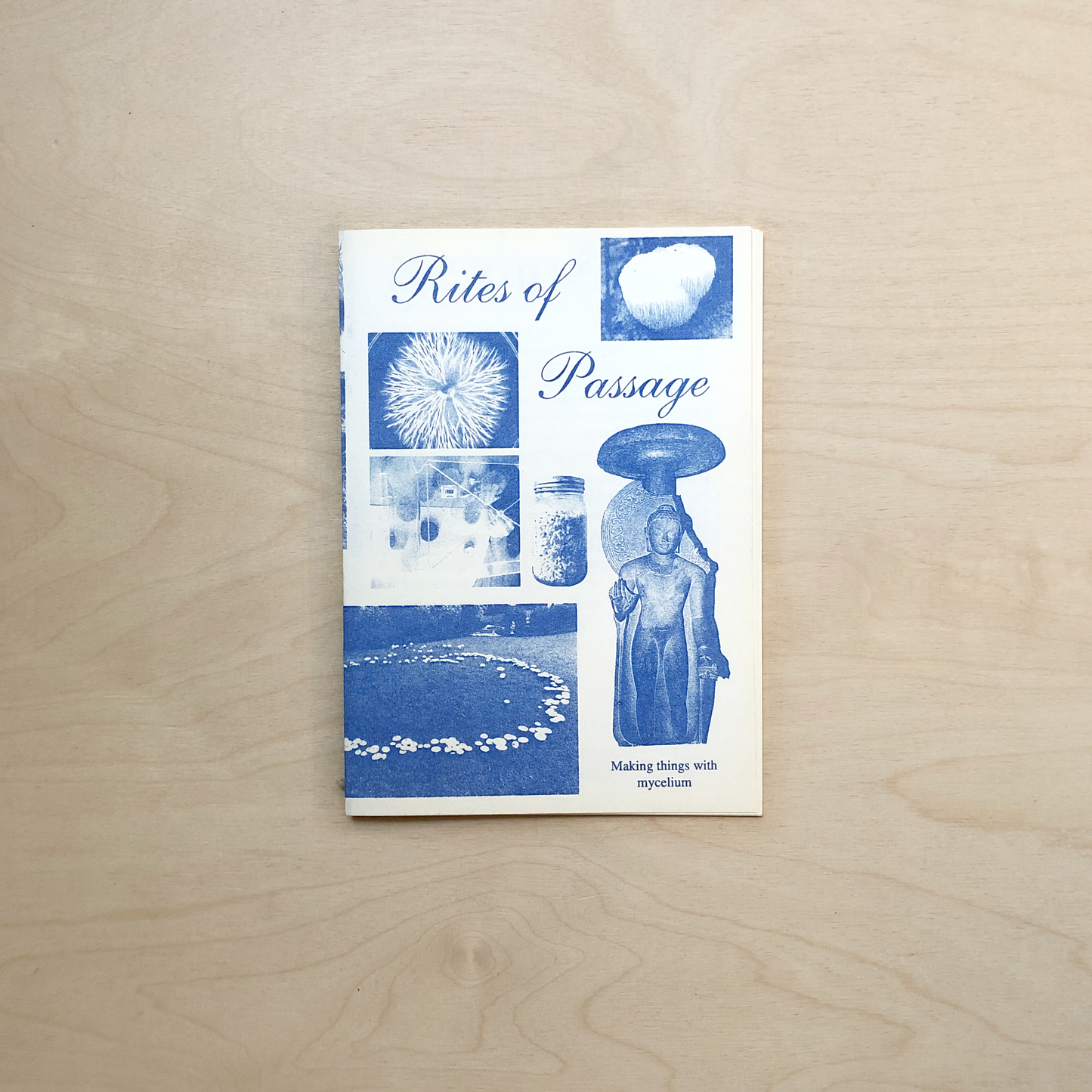Rites of Passage - Making Things with Mycelium
Rites of Passage - Making Things with Mycelium
Tessa Zettel & Pieterjan Grandry
Collective Disaster
2023
Softcover
21 x 15 x 0.5
20 pages
Normaler Preis
10,00 €
Normaler Preis
Verkaufspreis
10,00 €
Grundpreis
pro
inkl. MwSt.
Verfügbarkeit für Abholungen konnte nicht geladen werden
Hovering between life and death, fungi are compost alchemists quietly decomposing, transforming and renewing our shared worlds, since our earliest evolutionary beginnings.
Underneath a mushroom is its mycelium, a complex root structure of fine white filaments (hyphae), spreading out like a mesh to connect entire forests. This neural network binds together earthly beings, enabling trees and other plants to communicate with one another and nutrients to be sent back and forth.
if mycelium guided the infrastructure and practices of a garden, what might it teach us about transitions, decay and rebirth?
These delicate threads can also become a very strong and resilient material when dried. They can be grown in any shape and even sculpted after being baked. Eventually they can be composted. Different kinds of mushrooms will have their own mycelium growth patterns, resulting in specific object properties. For our test here we are using oyster mushrooms because they grow fast, and therefore have a smaller chance to be infected with molds or yeasts. In this guide we will make a simple container shape, sharing possibilities along the way for more elaborate mycelial worldings and wanderings.
Underneath a mushroom is its mycelium, a complex root structure of fine white filaments (hyphae), spreading out like a mesh to connect entire forests. This neural network binds together earthly beings, enabling trees and other plants to communicate with one another and nutrients to be sent back and forth.
if mycelium guided the infrastructure and practices of a garden, what might it teach us about transitions, decay and rebirth?
These delicate threads can also become a very strong and resilient material when dried. They can be grown in any shape and even sculpted after being baked. Eventually they can be composted. Different kinds of mushrooms will have their own mycelium growth patterns, resulting in specific object properties. For our test here we are using oyster mushrooms because they grow fast, and therefore have a smaller chance to be infected with molds or yeasts. In this guide we will make a simple container shape, sharing possibilities along the way for more elaborate mycelial worldings and wanderings.

